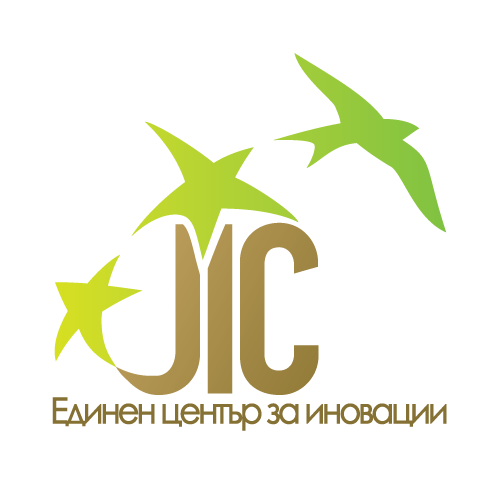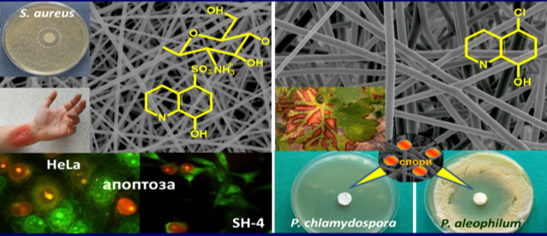
biomaterials
Fibrous materials with 8-hydroxyquinoline included in an amorphous state were obtained. The antimicrobial activity of the obtained fibrous materials against the pathogenic bacteria S. aureus and E. coli, as well as against the fungi C. albicans, P. chlamydospora and P. aleophilum was proven. The materials also exhibited high cytotoxicity against HeLa cervical cancer cells and against SH-4 melanoma cells.

biomaterials
The development concerns a colloidal aqueous system based on silymarin in liquid and gel form, obtained using an amphiphilic polyether block copolymer approved for use in food and medicine. The liquid formulation can be administered parenterally, orally, in the form of a spray and drops. The gel can be applied dermally. The improved solubility in water, combined with the beneficial properties of silymarin, makes the colloidal system based on silymarin, in any of its forms, suitable for use in the pharmaceutical, food industry, human and veterinary medicine and cosmetics. The results are reflected in a registered utility model: Petrov P., Mehandzhieva V., Ivanov V. Colloidal water system based on silymarin, BG 4347/06.10.2022.
Contact:
ppetrov@polymer.bas.bg
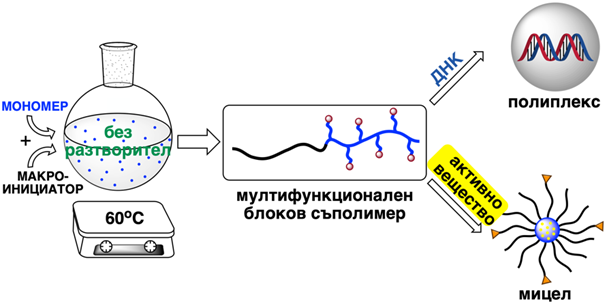
biomaterials
Copolymers were obtained as potential nanocarriers of hydrophobic biologically active substances, which self-associate in an aqueous medium, forming micelles of the “core-shell” type. The obtained copolymer was further modified with side amino groups to a hydrophilic block copolymer with the potential application in nanomedicine as carriers of low molecular weight active substances and DNA.
Contact:
office@jic.bas.bg

biomaterials
Femtosecond Laser-Induced Modification of Materials for Medical and Environmental Applications
Researchers from the Institute of Electronics have developed a method for non-contact femtosecond laser surface structuring of biocompatible materials as a sustainable process, which can be used to develop antibacterial surfaces for medical and environmental purposes. Three-dimensional structures of doped ceramic tablets, 2D polymer plates nanofunctionalized with hydroxyapatite and personalized 3D porous constructs based on tricalcium phosphate were obtained using freeze foaming technology, optimally tailored to the mechanical and physiological needs of bone tissue, leading to improved cell adhesion and biocompatibility. A protocol has been developed for generating stable micro- and nanoscale structural topographies of various sizes, shapes, and periodicities, providing an antibacterial surface for ceramic and polymer biomaterials, having the potential for widespread application both as temporary bone implants and as self-cleaning “anti-biofouling” surfaces.
Contact:
office@jic.bas.bg
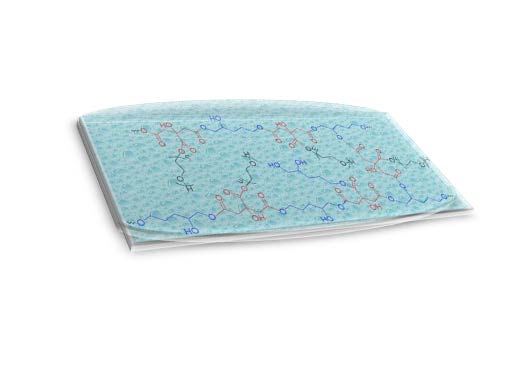
biomaterials
Environmentally friendly synthesis of functional hydrogels based on natural products
A study of the synthesis of new functional hydrogels based on two natural products – citric acid and pentane-1,2,5-triol (a product obtained from the processing of lignocellulose), obtained by an environmentally friendly method, was carried out at the Institute of Polymers. The crosslinking of the starting reagents was carried out by a polycondensation reaction at elevated temperature in the absence of a solvent. Tests with healthy skin cells show that the developed system has the potential for application in wound healing through wound protection and hydration, as well as controlled release of therapeutic substances.
Contact:
office@jic.bas.bg
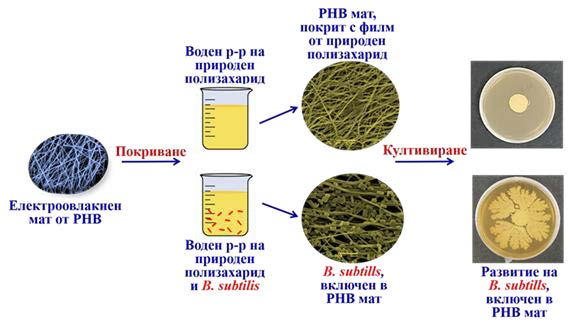
biomaterials
Environmentally friendly polymer biomaterials for organic agriculture
Development of environmentally friendly polymer biomaterials with applications in organic agriculture, forestry, ecological restoration and related fields, solving problems related to plant protection and the phase-out of chemical pesticides was carried out by a team at the Institute of Polymers. A set of fibrous biomaterials (composed of micro- and nanofibers) was created from pre-electrospun aliphatic polyesters obtained from renewable sources (polylactides, polyhydroxyalkanoates and their copolymers) with a coating applied to them by immersion in aqueous solutions of natural polysaccharides (chitosan and cellulose derivatives) containing biocontrol agents (bioagents). The biomaterials were obtained using “green” methods in two stages – first, a nonwoven textile made of aliphatic polyester was obtained through electrospinning, which was then coated by immersion in aqueous solutions of natural polysaccharides containing a bioagent.
Contact:
office@jic.bas.bg
